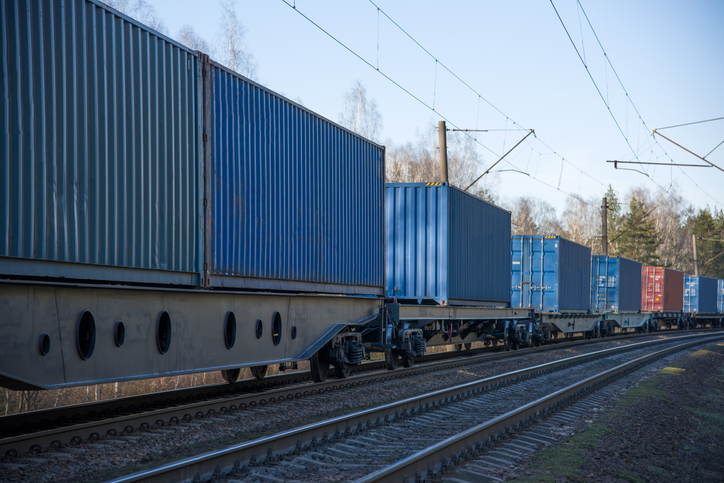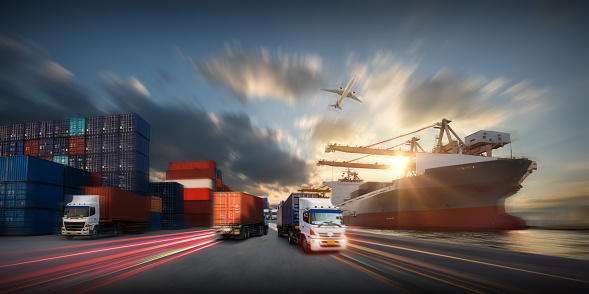In the intricate world of shipping and logistics, businesses face the crucial decision of partnering with either an Asset-Based Carrier or a Third-Party Logistics (3PL) provider. This article aims to unravel the core differences, advantages, and considerations of each choice. Whether you're an established business evaluating your current transportation strategy or a startup navigating the logistics landscape, this guide will offer clarity and insight into making an informed decision.
The global movement of goods has never been more crucial, with businesses of all sizes seeking efficient, cost-effective, and sustainable transportation solutions. Among the myriad of options available, intermodal transportation is emerging as a prominent choice. But exactly what is intermodal transportation, and why is it gaining prominence in the realm of logistics?
What is Intermodal Transportation?
Intermodal transportation, in its essence, represents a seamless and integrated approach to moving goods across various modes of transportation. It transcends traditional single-mode transportation by combining multiple modes, such as trucks, trains, and ships, into a coordinated system. This fusion of diverse transportation methods underpins the concept of intermodal logistics.
The Strengths of Intermodal Logistics
Intermodal logistics offers a multitude of advantages that cater to the modern shipping landscape. Let's delve into these strengths:
- Cost-Efficiency: Intermodal transportation excels in cost-efficiency, especially for long-distance shipping. By strategically integrating different modes, it optimizes the use of resources and reduces overall transportation expenses.
- Environmental Benefits: In an era of increasing environmental awareness, intermodal logistics shines as an eco-friendly choice. Its reliance on railways and waterways minimizes carbon emissions, contributing to sustainability objectives.
- Flexibility and Versatility: Intermodal transportation is known for its adaptability. It can seamlessly transition between various transport segments, accommodating a diverse range of cargo and destinations.
- Safety and Security: Securely sealed containers and streamlined processes enhance the safety and security of intermodal shipments. This reduces risks during transit, ensuring the safe arrival of goods.
Drayage: Bridging the Gaps
Crucial to intermodal transportation is the concept of drayage. Drayage refers to the short-distance movement of goods between transportation hubs, typically the "first mile" and "last mile" of the shipping journey. Drayage services act as the connective tissue, efficiently transferring containers from one mode of transportation to another. This seamless transition minimizes delays and ensures cargo flows smoothly through the supply chain.
The Role of Intermodal Marketing Companies (IMCs)
Intermodal Marketing Companies (IMCs) play a pivotal role in facilitating intermodal transport. They act as intermediaries, connecting shippers with transportation providers across different modes. IMCs leverage their expertise and network to optimize routes, select the most cost-effective carriers, and streamline the entire transportation process. Businesses benefit from IMCs' industry insights and logistical prowess.
Challenges in Intermodal Transportation
While intermodal transportation offers a plethora of benefits, it is not without its challenges. Businesses must be aware of potential obstacles to ensure a successful logistics strategy. Some of the common challenges include:
- Transition Delays: Intermodal shipments involve transitions between various modes, which can introduce delays if not executed seamlessly. Efficient coordination is essential to mitigate such issues.
- Infrastructure Considerations: The quality and availability of transportation infrastructure can impact the efficiency of intermodal transportation. Businesses must assess infrastructure capabilities along their chosen routes.
- Weather and External Factors: Inclement weather or unforeseen external factors can disrupt intermodal shipments. Contingency plans and real-time monitoring help address these challenges.
Craft Your Logistics Plan with Visigistics
At Visigistics, we specialize in international and domestic logistics solutions that harness the power of intermodal transportation. Our team of experts is dedicated to optimizing your supply chain, reducing costs, and enhancing sustainability through tailored intermodal logistics strategies. Contact us today to explore how intermodal transportation can elevate your business's shipping efficiency and competitiveness in the global marketplace.
Are you ready to unlock the potential of intermodal transportation? Contact Visigistics today and embark on a journey toward efficient, cost-effective, and sustainable logistics solutions. Together, we can shape the future of your shipping strategy.
Frequently Asked Questions:
In what ways does intermodal transportation help reduce highway congestion?
Intermodal transportation helps reduce highway congestion by transferring goods using multiple forms of transportation, such as trains and ships, along with trucks. This integrated approach minimizes the reliance on long-haul trucking across highways, distributing the transport workload more evenly across different transportation modes. By utilizing railways and waterways, intermodal transportation can move a larger volume of goods over long distances more efficiently, thus reducing the number of trucks on the road. This effectively eases traffic congestion, leading to smoother and faster travel for other road users.
Why does domestic 53' intermodal continue to outpace the freight industry in growth?
The domestic 53’ intermodal transportation method is growing faster than other sectors in the freight industry mainly because it offers several distinct advantages. Despite these benefits, it remains underutilized by many shippers.
How does intermodal transportation address issues related to uncertainty, price, capacity, and service in the freight industry?
Intermodal transportation revolutionizes the freight industry by addressing key challenges of uncertainty, price fluctuations, capacity constraints, and service quality. By seamlessly integrating various modes of transportation, intermodal logistics enhances predictability and reliability in supply chain operations. This strategic approach optimizes costs, mitigates price volatility, maximizes capacity utilization, and ensures consistent service levels. Through its flexibility, efficiency, and security measures, intermodal transportation emerges as a solution-driven paradigm, reshaping the landscape of freight logistics.
Intermodal transportation offers a substantial solution by providing an abundance of 53' capacity, especially effective on high-volume lanes where a dray driver can efficiently manage multiple loads to and from the origin and destination ramps. This capability significantly diminishes the dependence on truckload capacity, thereby optimizing the utilization of available resources. In certain geographical lanes, the operational characteristics of intermodal transportation outperform traditional truckload methods, enhancing service reliability and efficiency. However, it is critical to acknowledge that challenges such as issues with the dray leg or overestimations by Intermodal Marketing Companies (IMCs) can occasionally impact service expectations.
Price considerations also play a pivotal role in the adoption of intermodal transportation. While often more cost-effective than truckload alternatives, the pricing advantage of intermodal can vary based on seasonal and market conditions. This necessitates a strategic approach from shippers to leverage intermodal solutions when the value and cost-benefit align favorably.
Addressing uncertainty, intermodal transportation significantly streamlines the complexities involved in cross-border transportation among the US, Canada, and Mexico. The integrated handling of customs, taxes, and clearance processes reduces delays and enhances the flow of goods, mitigating the risks associated with international freight movement. Furthermore, the security aspect of intermodal transportation, particularly in regions like Mexico, adds an additional layer of confidence for shippers, although it remains imperative for them to secure insurance coverage for their goods to safeguard against potential losses.
Why should shippers use intermodal in their supply chains?
Intermodal transportation excels in cost-efficiency, especially for long-distance shipping. By strategically integrating different modes, it optimizes the use of resources and reduces overall transportation expenses. According to data from the CSX website, one train can move the equivalent of 280 trucks, significantly reducing the number of vehicles needed and enhancing fuel efficiency—rail can move one ton of freight as far as 450 miles on just a single gallon of fuel.
In an era of increasing environmental awareness, intermodal logistics shines as an eco-friendly choice. Its reliance on railways and waterways minimizes carbon emissions, contributing to sustainability objectives. This is further supported by the opportunity for shippers to achieve SmartWay certification, recognizing their efforts in maintaining environmentally responsible supply chains.
Intermodal transportation is known for its adaptability. It can seamlessly transition between various transport segments, accommodating a diverse range of cargo and destinations. Additionally, the secure and limited access to freight on trains—where container doors cannot be opened during transit—enhances the safety and security of intermodal shipments. This reduces risks during transit, ensuring the safe arrival of goods.
Moreover, the operational capabilities of intermodal transport offer strategic advantages in managing high-volume lanes. A dray driver can manage multiple loads to and from origin and destination ramps more efficiently, reducing the need for increased truckload capacity. This operational efficiency is crucial when managing logistics across the vast distances of North America, smoothing out the complexities of cross-border shipments with Canada and Mexico, particularly in navigating customs, tax, and clearance processes.





